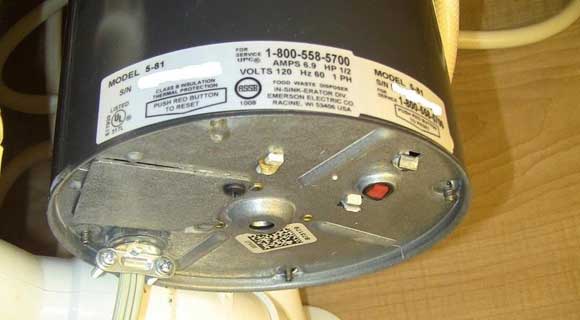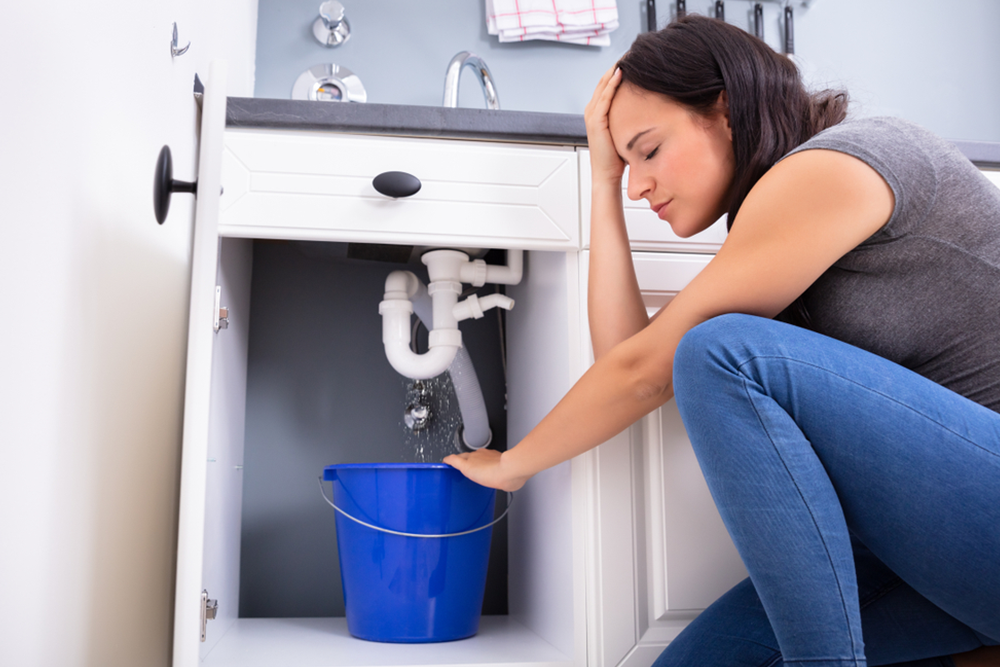Easy-to-Follow Techniques for Repairing a Leaky Garbage Disposal
Easy-to-Follow Techniques for Repairing a Leaky Garbage Disposal
Blog Article
This post in the next paragraphs about Why Is My Garbage Disposal Leaking From the Bottom? is especially captivating. Read it yourself and decide what you think of it.

Garbage disposals are vital cooking area appliances that assist in getting rid of food waste effectively. Nevertheless, a dripping garbage disposal can be a frustrating and untidy issue to manage. Fortunately, numerous leakages can be fixed easily with a few basic actions. In this write-up, we will certainly go over just how to deal with a dripping waste disposal unit effectively.
Intro
Garbage disposals are mounted under kitchen sinks and are created to shred food waste into smaller items, enabling it to pass through the pipes system conveniently. While these tools are generally reliable, leaks can take place over time because of deterioration, loose connections, or damage to the unit.
Step-by-Step Guide to Dealing With a Leaking Garbage Disposal
Turn Off the Power
Before trying any kind of repair work, guarantee that the power to the garbage disposal device is turned off to avoid the danger of electric shock.
Locate the Leakage
Determine the specific location of the leakage and establish the cause
Tighten Links
Use a wrench to tighten any kind of loose links between the disposal device and the plumbing system.
Change Seals or Gaskets
If the leak results from worn seals or gaskets, get rid of the old components and change them with new ones.
Patching Fractures or Openings
For fractures or openings in the disposal unit, use epoxy or a suitable patching product to secure the damaged area.
Recognizing the Resource of the Leak
Before attempting to deal with a leaking garbage disposal, it is necessary to determine the resource of the leakage. This can typically be done with visual assessment or by conducting easy tests.
Visual Inspection
Examine the garbage disposal device carefully for any signs of water leak. Pay close attention to areas around seals, gaskets, and link points.
Testing for Leaks
One means to test for leaks is by running water via the disposal device and checking for any type of visible indicators of leakage.
Common Causes of Leakages in Trash Disposals
Worn Seals and Gaskets
Seals and gaskets play an important function in preventing water from leaking out of the waste disposal unit. In time, these parts can degrade, resulting in leakages around the disposal unit.
Loose Links
The connections between the waste disposal unit and the pipes system can become loosened with time, triggering water to leak out throughout procedure.
Splits or Holes in the Disposal Device
Physical damage to the garbage disposal, such as fractures or openings in the real estate, can additionally lead to leakages.
Devices and Products Needed for Dealing With a Leaking Garbage Disposal
Before beginning the repair work process, gather the essential devices and materials, including a screwdriver, adjustable wrench, plumbing's putty, substitute seals or gaskets, and epoxy or patching product for repairing cracks or holes.
Examining the Waste Disposal Unit After Repair Service
Once the repair is full, check the garbage disposal by running water with it to ensure that the leakage has been dealt with.
Preventive Upkeep Tips to Prevent Future Leakages
To avoid future leaks, it is vital to perform normal upkeep on your garbage disposal. This includes maintaining it tidy, preventing putting non-food items or hard items down the disposal, and periodically checking for leakages or other issues.
Verdict
To conclude, taking care of a dripping garbage disposal is a fairly uncomplicated procedure that can be completed with fundamental tools and materials. By complying with the actions described in this article and exercising preventative upkeep, you can keep your waste disposal unit in good working problem and stay clear of pricey fixings in the future.
HERE’S HOW TO FIX YOUR GARBAGE DISPOSAL
WHAT TO DO IF SOMETHING IS STUCK IN YOUR GARBAGE DISPOSAL
If the impeller won’t turn, there’s probably something stuck in the disposal. It could be a steak bone or peach pit, although plumbers report pulling all sorts of inappropriate objects out of disposals, such as bottle caps or aluminum foil. Make sure power to the disposal is off, and look inside to see if you can see the source of the jam.
Never stick your fingers in a disposal. Pull out anything you see with tongs or pliers.
If the disposal still won’t work, it may be time to call a plumber or consider buying a new disposal. GEM Plumbing & Heating is here for all of your garbage disposal needs.
WHAT TO DO IF YOUR GARBAGE DISPOSAL DRAIN IS CLOGGED
Take everything out from underneath your sink and put a bucket or other container under your disposal to catch any water that drains out. Disconnect your disposal from the power supply. If it’s plugged into a wall outlet, unplug it. If it’s hardwired into an electrical box, go to the electrical panel and turn off the breaker for the disposal. Pour ¼ cup of baking soda into the drain, followed by ½ cup of white vinegar. Give the solution a few minutes to fizz and do its work. Look into the disposal with a flashlight to see if you can see an object that might be causing the clog. If you see it, remove it using tongs or pliers. MORE TIPS ON DEALING WITH A CLOGGED GARBAGE DISPOSAL
Never use drain cleaner in a garbage disposal. It can damage the plastic parts inside the disposal. You can also be splashed with the caustic liquid while working to clear the clog. Beware! Never stick your fingers into a garbage disposal. Trust us — not a good idea. In many instances, your dishwasher drains through your garbage disposal. This allows the disposal to grind any large food particles that may be drained out of your dishwasher. There are some jurisdictions, however, where the plumbing code prohibits such a connection. WHAT TO DO WHEN YOUR DISHWASHER DRAINS THROUGH THE DISPOSAL
Run some water in the sink so your plunger has at least a ½-inch of water to create a seal and plunge vigorously up and down several times. You may need to repeat this several times. Run hot water down the drain to clear any residue that remains.

I am very excited about Why Is and I am assuming you enjoyed our blog posting. Sharing is good. Helping people is fun. We cherish reading our article about Garbage Disposal Leaking From Bottom.
Suggested Site Report this page